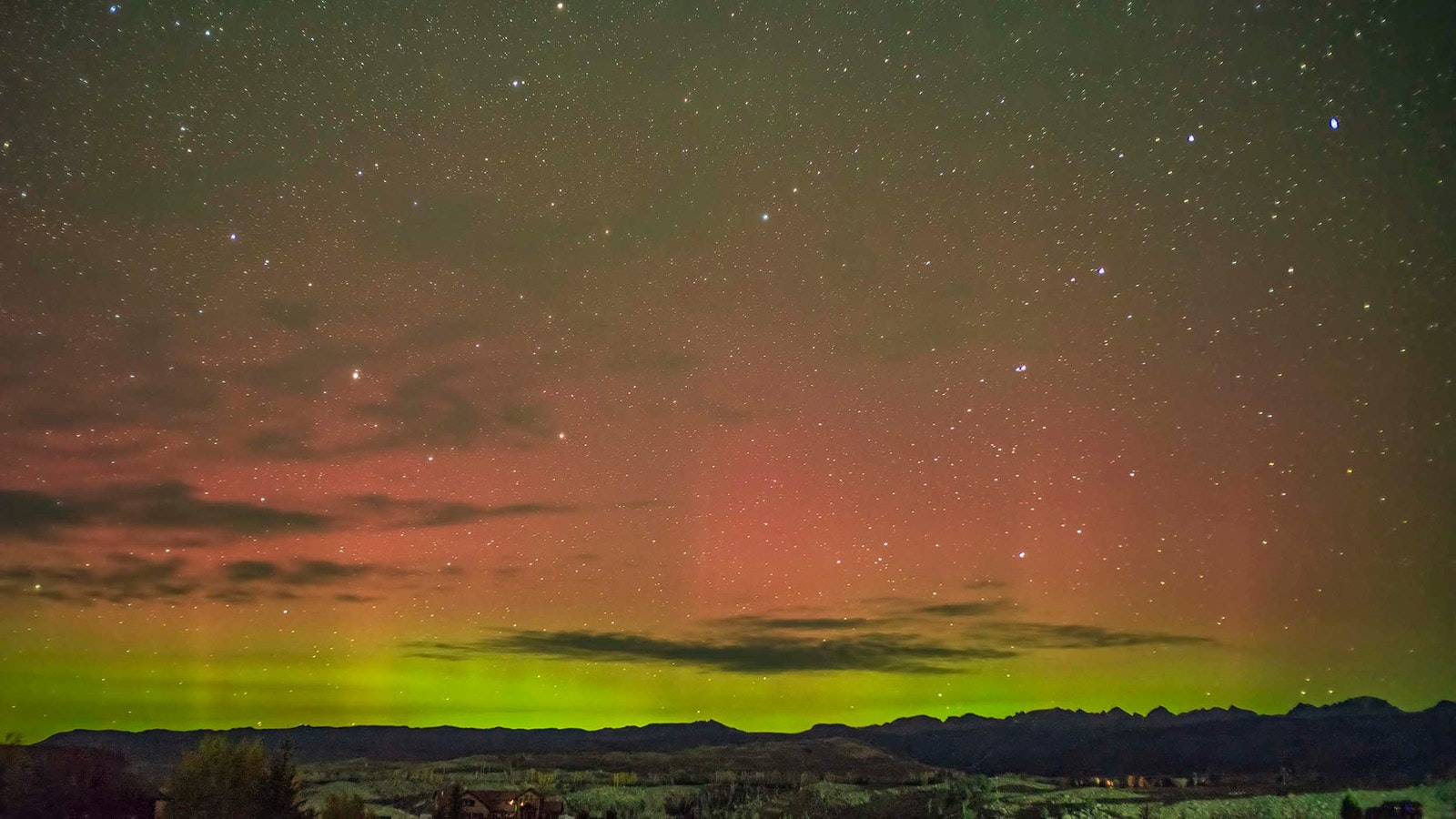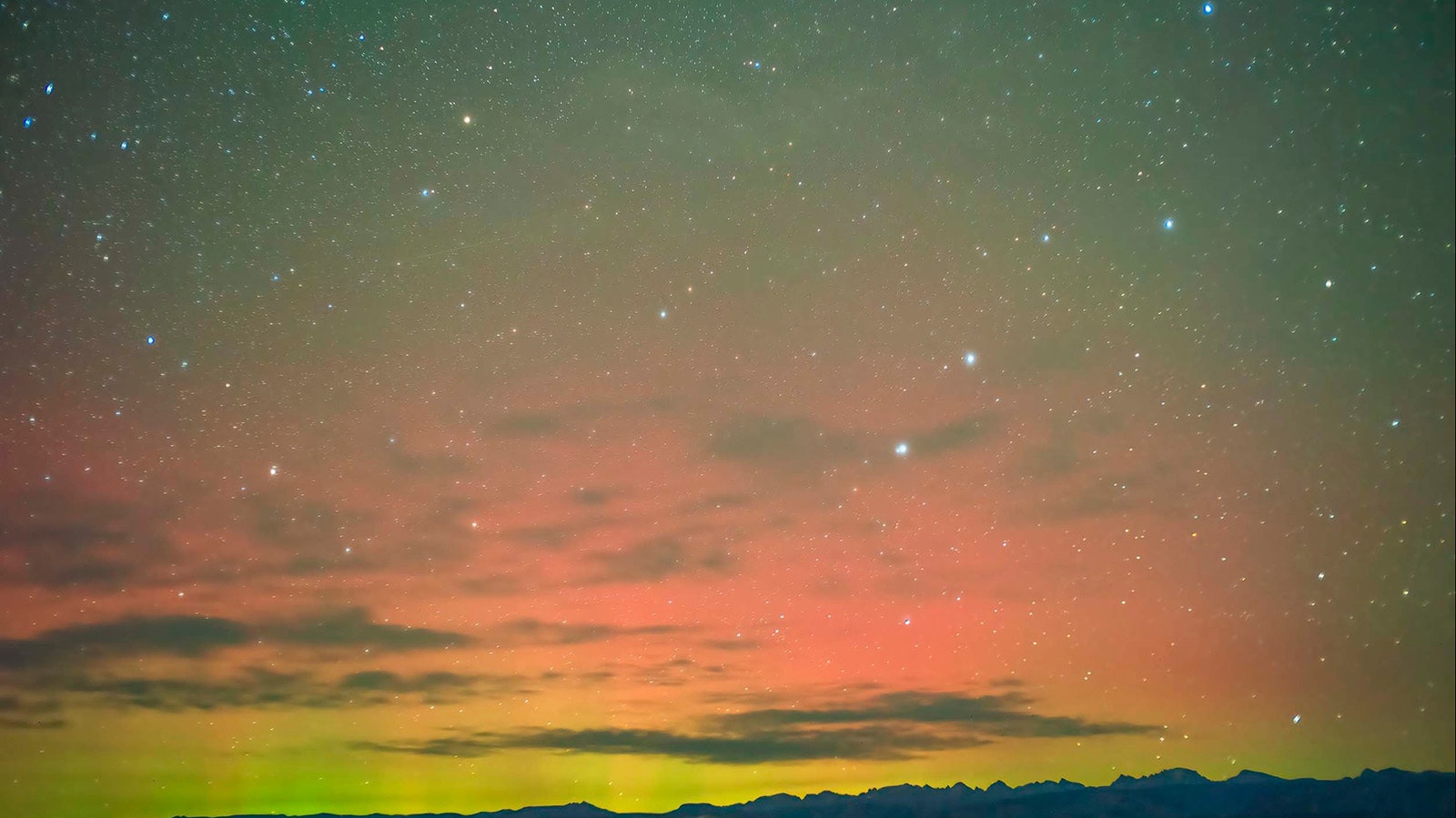Few sights add to the beauty of the pristine night skies of Wyoming like the aurora borealis.
Usually concentrated around the planet’s northernmost latitudes, there have been several nights recently when the aurora’s colorful ribbons of light have been visible throughout the Cowboy State.
Anyone who laments missing any or all of these episodes might get plenty of opportunities in the near future as the sun enters a spectacular and predictable cycle that reaches beyond the poles and into Wyoming.
Surprise! Aurora Borealis
Noted Wyoming photographer Dave Bell didn’t go outside to witness the aurora borealis in the early morning Saturday. He stepped out at 2:30 a.m. to drive away a moose munching on one of his trees and rubbing up against his house.
Around that time, he noticed a white glow in the northern skies. After setting up his tripod to snap a quick picture, he realized another spectacular display was in the sky.
“The first picture appeared on the back of the camera, and I had green and pink,” he told Cowboy State Daily. “So, I got a warm coat and a hat and stood outside for a few hours taking pictures.”
Bell uses several phone apps, like Sky Tonight, that send notifications about something noteworthy in the sky based on his geographic location. The aurora that morning came as a complete surprise.
“No advanced notice from anyone or anything,” he said. “Nobody knew it was coming. The only reason I was up was to throw rocks at a moose.”

‘A Solar Maximum’
Anyone who regularly seeks out the aurora borealis knows its unpredictability is the most predictable thing about the phenomenon, which is typically a rare sight as far south as Wyoming. However, there’s every indication that auroras have been, and will be, more frequent in the night skies.
For centuries, astronomers have observed an 11-year cycle of solar activity, as the sun fluctuates between producing high and low amounts of solar flares and sunspots, areas of the sun’s surface with a temporarily reduced surface temperature, said Cowboy State Daily meteorologist Don Day. “As part of the solar cycle, the sun has a maximum period with many sunspots and a minimum period with a low number. These periods determine the frequency and intensity of the auroras at the earth’s north and south poles.
“We’re headed towards a solar maximum,” said Day, “which should occur between 2024 and 2025. There’s a lot of sunspots and solar flares. This is the period in the solar cycle where you have more auroras and tend to see them more visible to the south.”
This means that the aurora borealis will be seen more regularly in Wyoming for at least the next year, and possibly longer.
The best of the aurora in Wyoming is yet to come, potentially, Day said, adding that doesn’t make predicting when to see one any easier.
“Trying to predict these events is really hard, but we’re in a period where we can expect to see more,” he said.
Once the sun reaches its solar maximum, it will gradually transition into its solar minimum. It won’t be impossible to see the aurora borealis in Wyoming at that point, but it will be much rarer until the next solar maximum is reached in another decade.
A Picture Lasts Longer
Bell says the best way to observe the aurora borealis is by taking pictures. While it is possible to see the lights with the naked eye, the camera usually captures the best show. That was the case Saturday morning.
“I knew it was there,” he said. “I could see the flickering. But as soon as the pictures showed up, I saw it was spectacular. I’ve seen brighter ones, and I’ve seen weaker ones, but I could see it with the naked eye.”
Color is one of the hardest things to see in an aurora borealis without the aid of a camera. The aurora is known for its color, but it becomes less distinct the further south it is from the North Pole.
To get such colorful images in Wyoming, Bell used a 20- to 25-second exposure. He got to experience the full grandeur of the surprise show with his own eyes through a lens. It’s an experience available to everyone with the proper knowledge and timing.
“The camera’s the one that picks up the color,” he said.
One of the biggest takeaways this weekend was the pleasant surprise of seeing the aurora borealis at all that morning. While there are ways to be informed of a good night to see the lights, Day and many others believe catching one unexpectedly is the best way to experience it.
“This year, the well-advertised (auroras) have been disappointing,” he said. “It’s been the ones that weren’t forecasted that put on the best show. And historically, that’s what usually happens.”
Andrew Rossi can be reached at arossi@cowboystatedaily.com.





